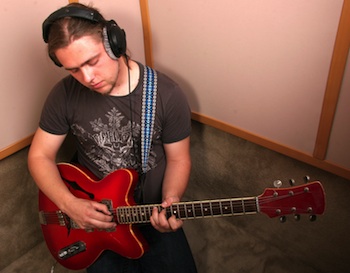 Written by Gary Ewer, from “The Essential Secrets of Songwriting” website.
Written by Gary Ewer, from “The Essential Secrets of Songwriting” website.
Check out “The Essential Secrets of Songwriting” e-books. Increase your listenership simply by fixing your songs! Eliminating one small error can turn a weak song into one that everyone is humming.
____________
 A few months back I wrote an article about the differences between minor key and minor mode (see here.) Songs written in a minor mode are actually far more numerous than those written in a minor key, (especially in the pop song world), and it’s mainly because the lowered 7th note of the most-used modal scales tends to have more appeal. So what progressions are good ones to try?
A few months back I wrote an article about the differences between minor key and minor mode (see here.) Songs written in a minor mode are actually far more numerous than those written in a minor key, (especially in the pop song world), and it’s mainly because the lowered 7th note of the most-used modal scales tends to have more appeal. So what progressions are good ones to try?
A modal scale uses the key signature of a major scale, but begins and ends on a different note. For example, using the key signature of A major, but starting and ending your scale on B gives you the B Dorian scale. (If you need a refresher on the theoretical structures known as modal scales, try reading this lesson.)
You can write a song based on any of the seven modes, but you’ll find that some are more popular than others. The seventh mode, Locrian, is almost never used, because the interval between the first note and the fifth note of the scale is a diminished 5th – an odd interval to work into your music.
But the other modes are worth exploring. Here are some suggestions:
C DORIAN (built on the 2nd note of the major scale):
Cm F Cm Bb Cm Gm Cm
Cm Bb F Gm Cm
Cm Gm Cm F Bb Eb Bb Cm
C PHYGIAN (built on the 3rd note of the major scale):
Cm Db Cm Ab Cm Eb Fm Cm
C LYDIAN (built on the 4th note of the major scale):
C D G C Am D G C
C D Em Bm C D C
C MIXOLYDIAN (built on the 5th note of the major scale):
C F Gm C
C F Dm Gm Am Gm C
C Bb C F Gm Bb C
C AEOLIAN (built on the 6th note of the major scale):
Cm Fm Gm Cm
Cm Bb Ab Gm Cm
Cm Bb Ab Bb Eb Gm Cm
Cm Ab Eb Fm Cm
Of course, these are only some of the many, many possibilities. My personal favourite is playing around with the Lydian mode. It’s one that you find quite often as a basis for movie music where the composer is trying to impart a “child-like” quality. Most of the modes are great for setting a mood, so experiment. If it sounds good, use it!
__________
“The Essential Secrets of Songwriting” suite of downloadable songwriting texts will show you everything you need to know about writing great songs. Click here to read all about those books.










Hi Gary,
One question. How do we get the C major chord c,e,g in the C Dorian?
C D Eb F G A Bb C there is no E note.
Sorry about that, Pat, you’re right… it should have been Cm, which I’ve now corrected.
-Gary
This is an amazing set of articles. thank you for putting your knowledge out there for free.
I have been teaching myself theory for a few years now and your resources have helped me greatly.
Thanks very much, glad you enjoy.
-G
Hi Gary, when you say C Dorian is built on the 2nd note of the major scale, would the melody be *d,e,f,g,a,b,c,d* on top of Cm, F…? When I play a Cm chord on guitar I find it difficult to sing the Dorian scale over it, It seems a little easier descending, but still difficult. I haven’t quite got to grip with modes yet. Any tips?
C dorian is the scale that starts on the second note of the Bb major scale
Bb C D Eb F G A Bb
giving you C D Eb F G A Bb C